Items Module Overview
The Items module in Exsited is used to manage and maintain all inventory-related entries across the organisation. This includes standard items, variations, bundles, family, gift certificate and direct cost. Users can track availability, manage stock levels, configure pricing, and associate items with different workflows such as invoicing, purchasing, and selling.
Item Configuration – General Settings
Navigate to: Settings → General Settings → Item
Item Type Enablers:
Toggle available item types based on your organisation’s needs:
| Feature | Purpose |
|---|---|
| Enable Variation Based Item | Allows multiple product variants |
| Enable Gift Certificate | Activate digital gift items |
| Enable Bundle | Combine multiple SKUs into a single bundle |
| Enable Direct Cost | For services or expenses with no inventory |
| Enable Family Cost | Categorise items under families |
| Enable Item Grouping | Group similar items for filtering and reporting |
.png)
Workflow and Management Enablers:
| Feature | Status | Notes |
|---|---|---|
| Require Name to Be Unique | ✅ | Prevents duplicate item names |
| Enable Item Management | ✅ | Assign default item managers |
| Enable Workflow Approval for Items | ✅ | Adds governance for item creation |
| Default Group / Manager | Optional | Pre-filled values during item creation |
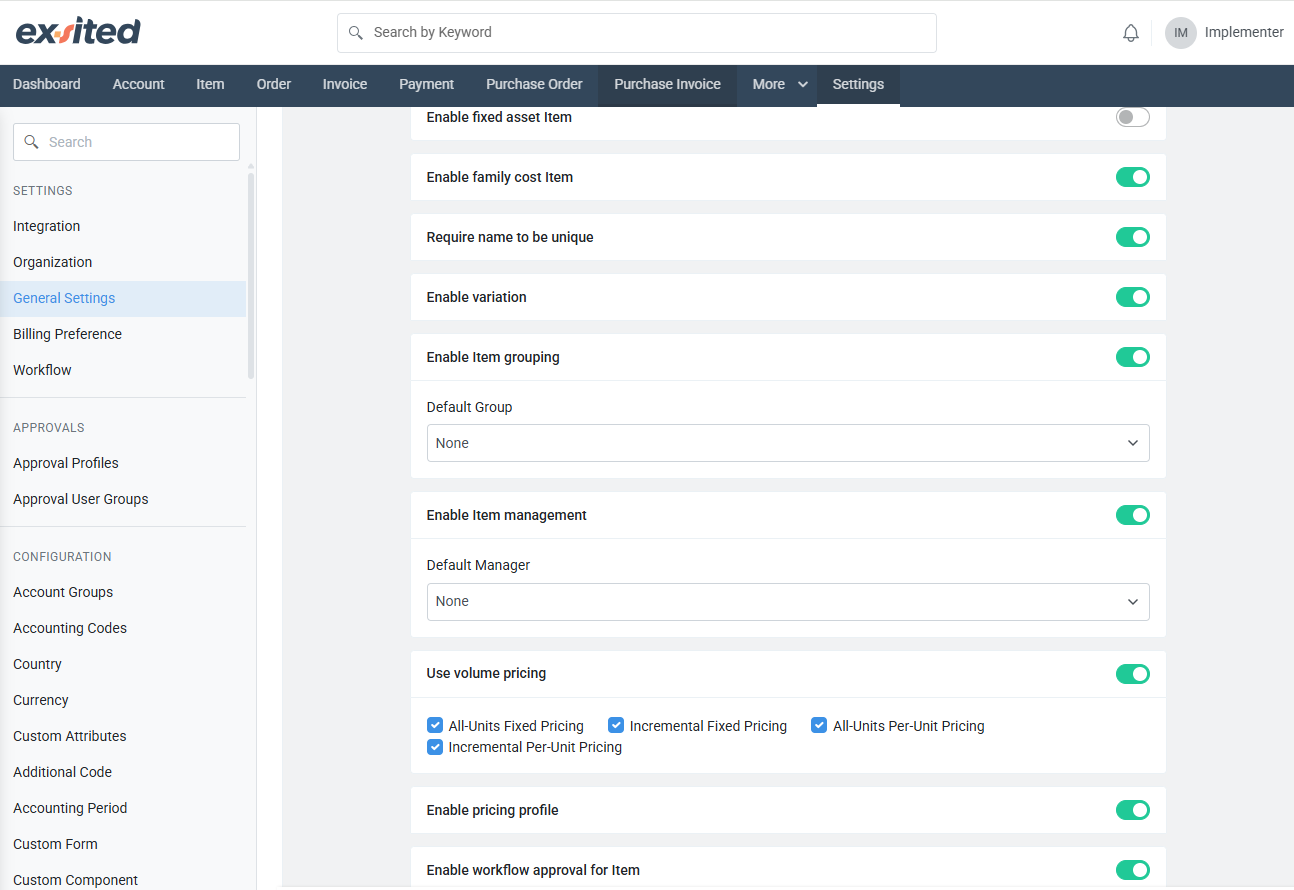
Sales and Purchase Configuration
| Feature | Toggle | Notes |
|---|---|---|
| Enable Sales | ✅ | Activate sales module for items |
| Charge Types | ✅ One-off, Recurring, Metered | |
| Enable Purchases | ✅ | Item can be procured via Purchase Orders |
| Tax Inclusion | ✅ | Applies to both purchase and sales pricing |
| Purchase Cost Rule | Default Purchase Price | Used in margin and reporting calculations |

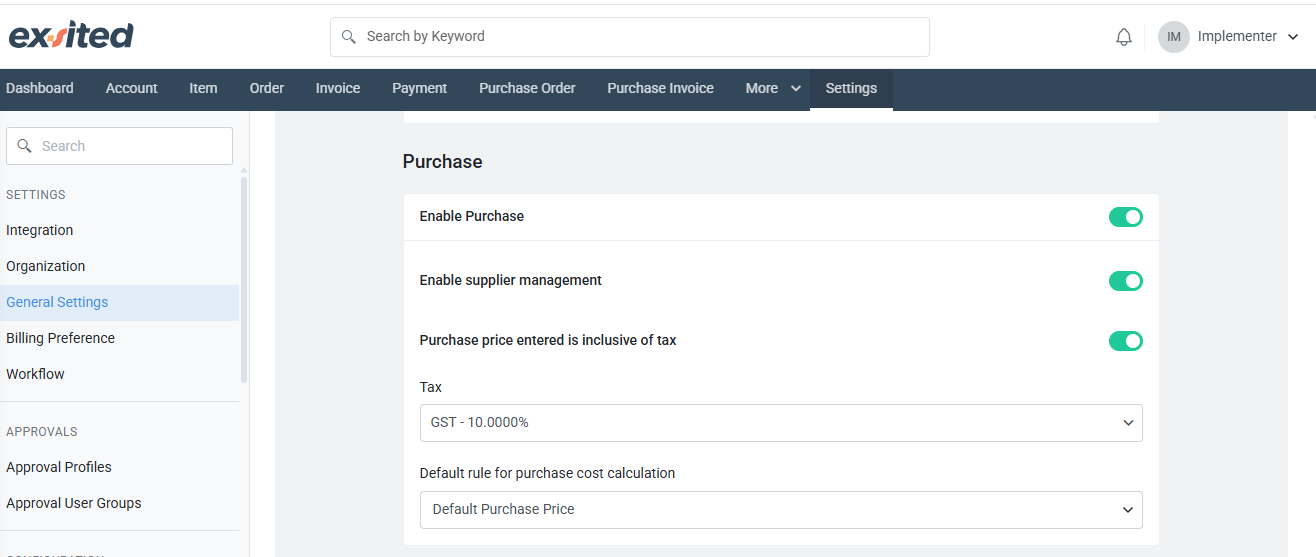
Inventory Configuration
| Setting | Description |
|---|---|
| Enable Inventory Management | Toggle full stock tracking |
| Enable Warehouse Management | Supports warehouse-specific stock levels |
| Inventory Adjustment Rules | Define how available quantity is calculated (e.g., Quantity On Hand + Quantity Promised) |
| Enable Serialization | For items requiring unique IDs (e.g., electronics) |
| Enable Batch Tracking | Track by production or expiry batches |
| Enable Inventory Costing | Supports FIFO/LIFO/Weighted Avg costing methods |
| Enable Back Order | Allow placing orders even with zero stock |
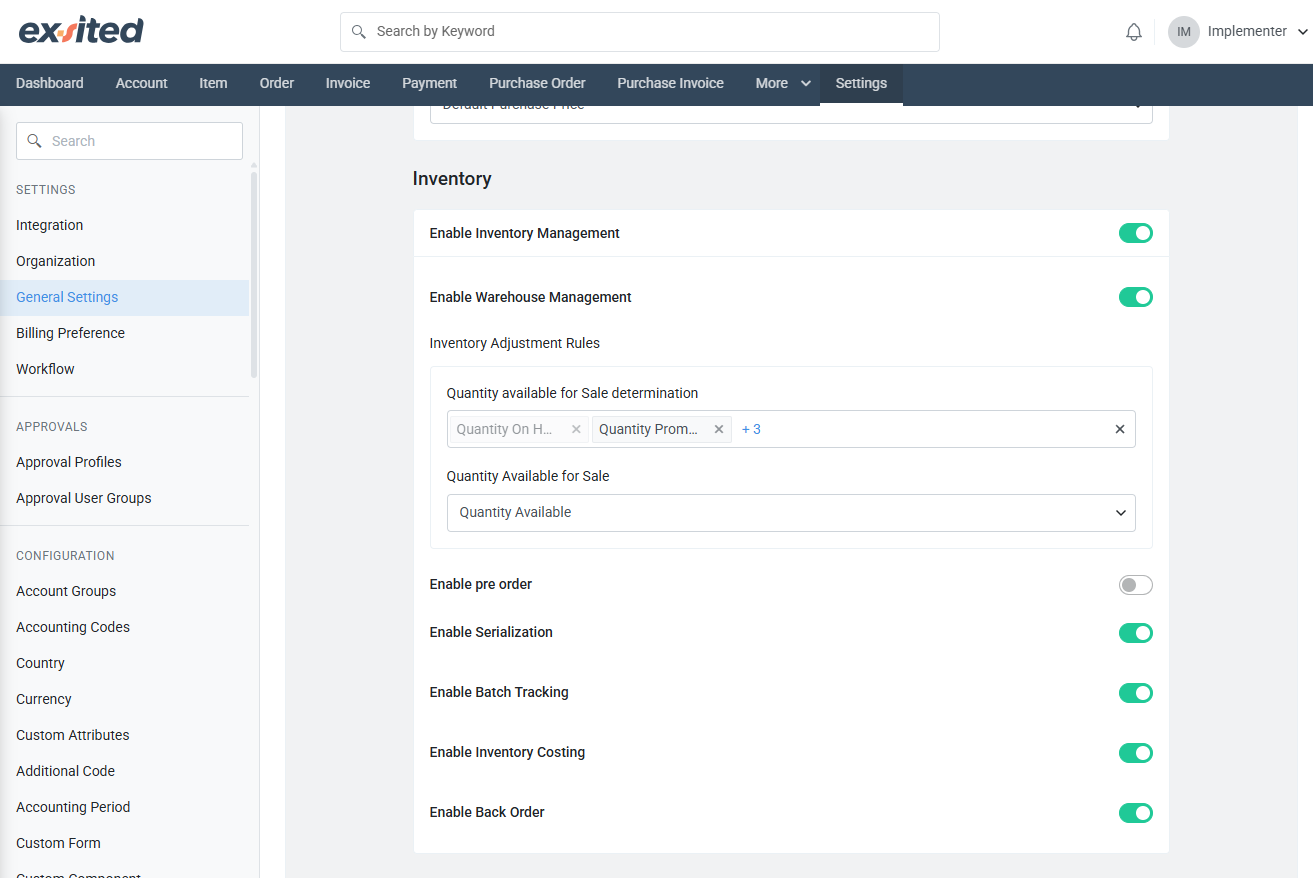
Item List View
In the Item List View, users can:
- View all items with key columns:
- ID: System-generated unique item ID (e.g., ITEM-0017)
- Item Name: The designated product name
- Stock Available: Real-time stock quantity available
- Active Orders: Number of active orders involving the item
- Created By and Created On: Shows who created the item and when
Filtering Options:
- Filter by Status, Type, Group, Manager, or use the search bar for quick access.
Buttons:
- Create Item: Add a new item
- Refresh: Reload the item list
- Column Configure: Show or hide specific columns in the item table
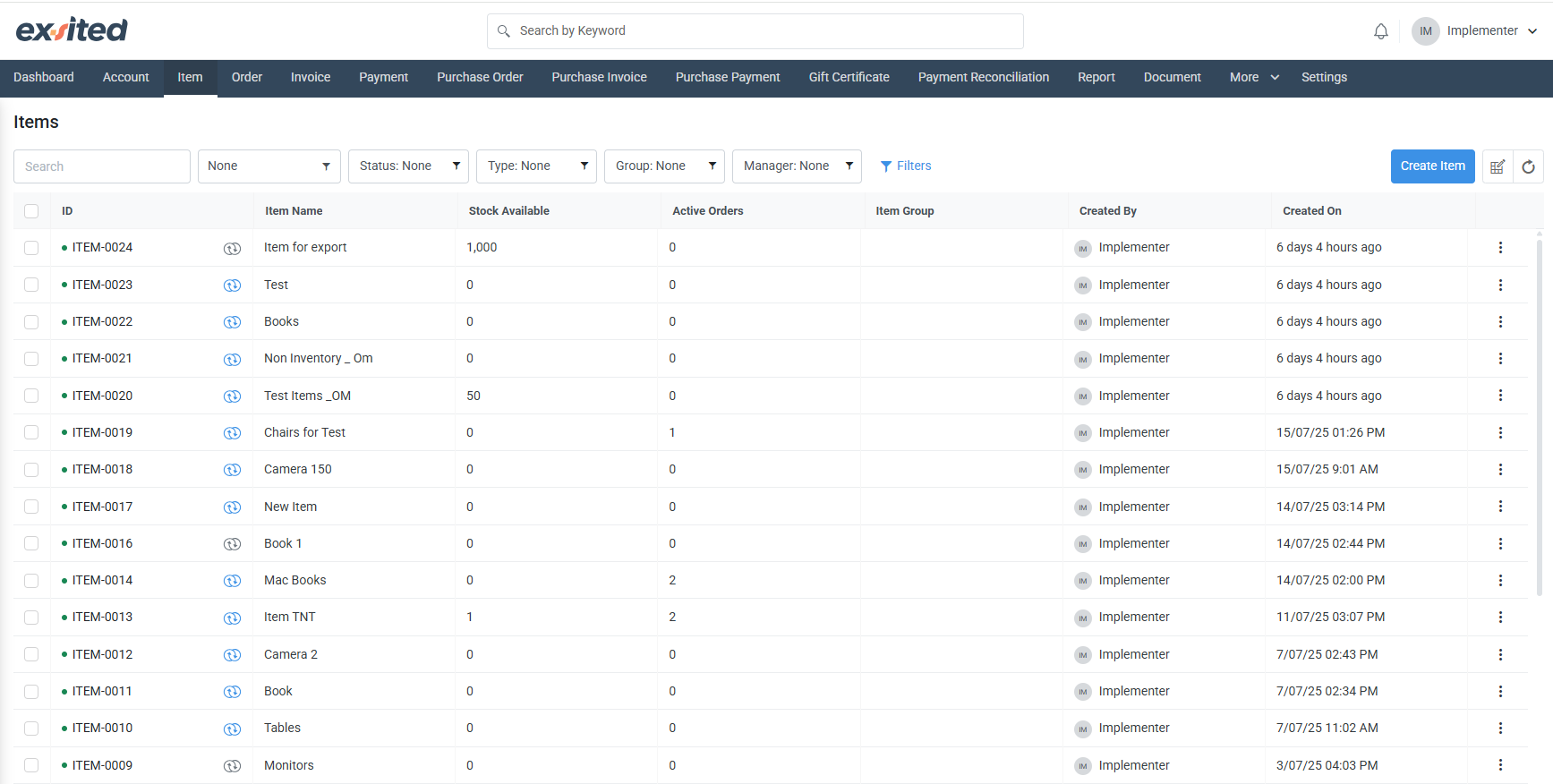
Create New Item
Clicking on the Create Item button will open the item creation form, where users can configure item properties.
Item Information:
| Field | Description |
|---|---|
| Name | System name of the item (e.g., "Camera 150") |
| Display Name | Front-end/label name shown in UI or documents |
| Item Type | Choose from: Standard, Variation, Bundle, Family, Gift Certificate, Direct Cost |
| UPC Code | Optional unique product code |
| Item Number | Internal SKU |
| Group | Optional classification group |
| Manager | Assign a responsible user |
Item Settings:
| Setting | Description |
|---|---|
| Enable Selling | Toggle if the item can be sold |
| Width / Length / Height / Weight | Physical dimensions (optional) |
| Charge Type | Default = One-off; configure as needed |
| Pricing Method | Choose between Standard and other advanced options |
| Sales Price Type | Per-unit pricing or volume pricing |
| Enable Back Order | Allow item to be ordered even if stock is 0 |
Item Types Explained:
| Type | Description |
|---|---|
| Standard | Default item for selling or purchasing |
| Variation | Used when an item has multiple variations (e.g., colour-size) |
| Bundle | Combination of multiple items sold together |
| Family | Grouping for categorisation or reporting |
| Gift Certificate | Non-physical, redeemable value product |
| Direct Cost | Non-inventory cost, such as a one-time service fee |
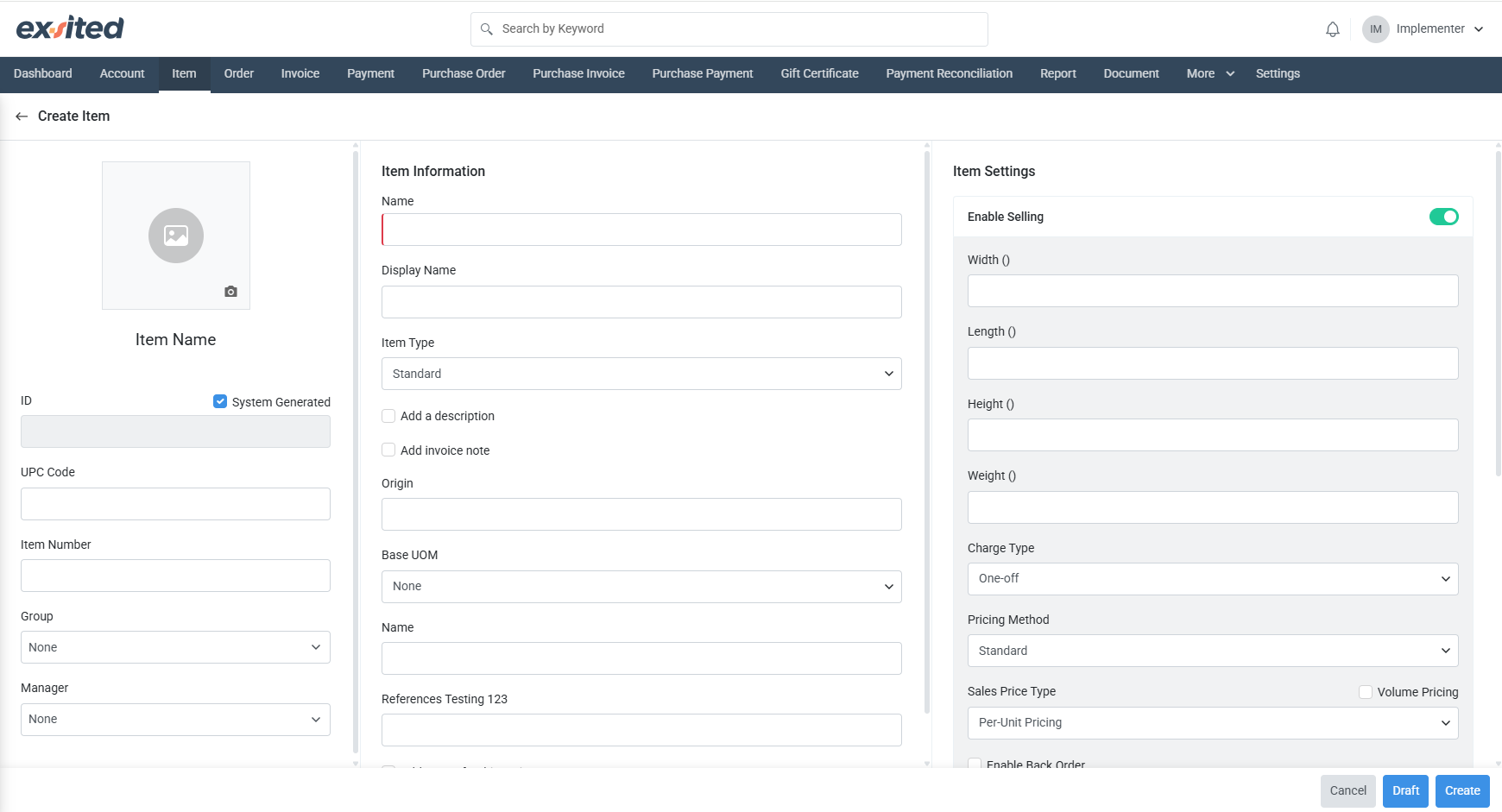
View Item Details
In the Item List View → Select Item
Sale Details
The Sale Details tab outlines how an item is configured for sales transactions within the system. It includes settings such as charge type (e.g., one-off, recurring), pricing method (standard or custom), and price type (per-unit or volume-based). Users can define default sale prices, determine whether prices are tax-inclusive, and assign accounting codes for sales revenue. Additional configurations include enabling or disabling back orders, setting pricing levels, and aligning payment terms, fulfilment methods, and invoicing preferences with organisational policies or customer agreements.

Purchase Details
The Purchase Details tab governs how the item is handled in procurement workflows. It captures key information such as purchase price type, default purchase price, tax treatment, and accounting codes for cost allocation. Users can specify whether purchase prices include tax and define purchase order notes if needed. Purchase properties like receive mode and receive term ensure that the receipt of goods aligns with operational requirements, providing clarity and structure to the item’s purchasing process.
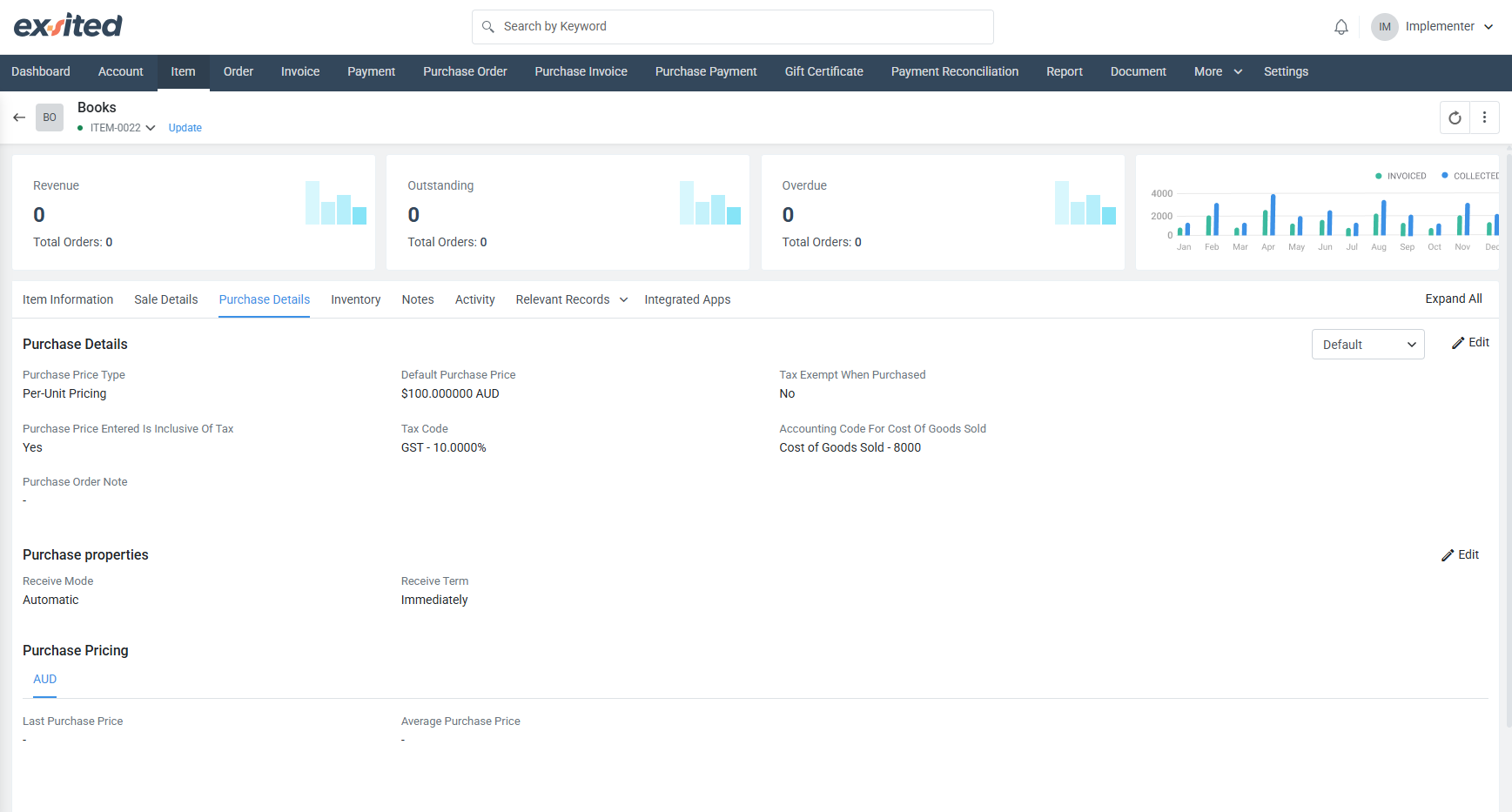
Inventory Details
The Inventory tab in Exsited allows users to manage item-level stock operations by linking each item to a designated warehouse (e.g., Victoria Packing Warehouse), enabling features like reordering, low stock notifications, inventory costing, and batch tracking. It displays real-time inventory metrics such as Quantity on Hand, Quantity Promised, and Quantity Available, calculated based on system-defined rules. Users can also view detailed transaction logs and perform actions like adding inventory or conducting stock assessments, ensuring accurate control and visibility over stock levels across warehouses.
.png)
Notes
The Notes tab provides a space to document internal comments, special handling instructions, or collaborative messages related to the item. This feature promotes effective communication among team members by allowing users to add and track notes over time. It’s particularly useful for logging contextual information, vendor instructions, or customer-specific requirements that are not captured in standard data fields, supporting better operational awareness and accountability.
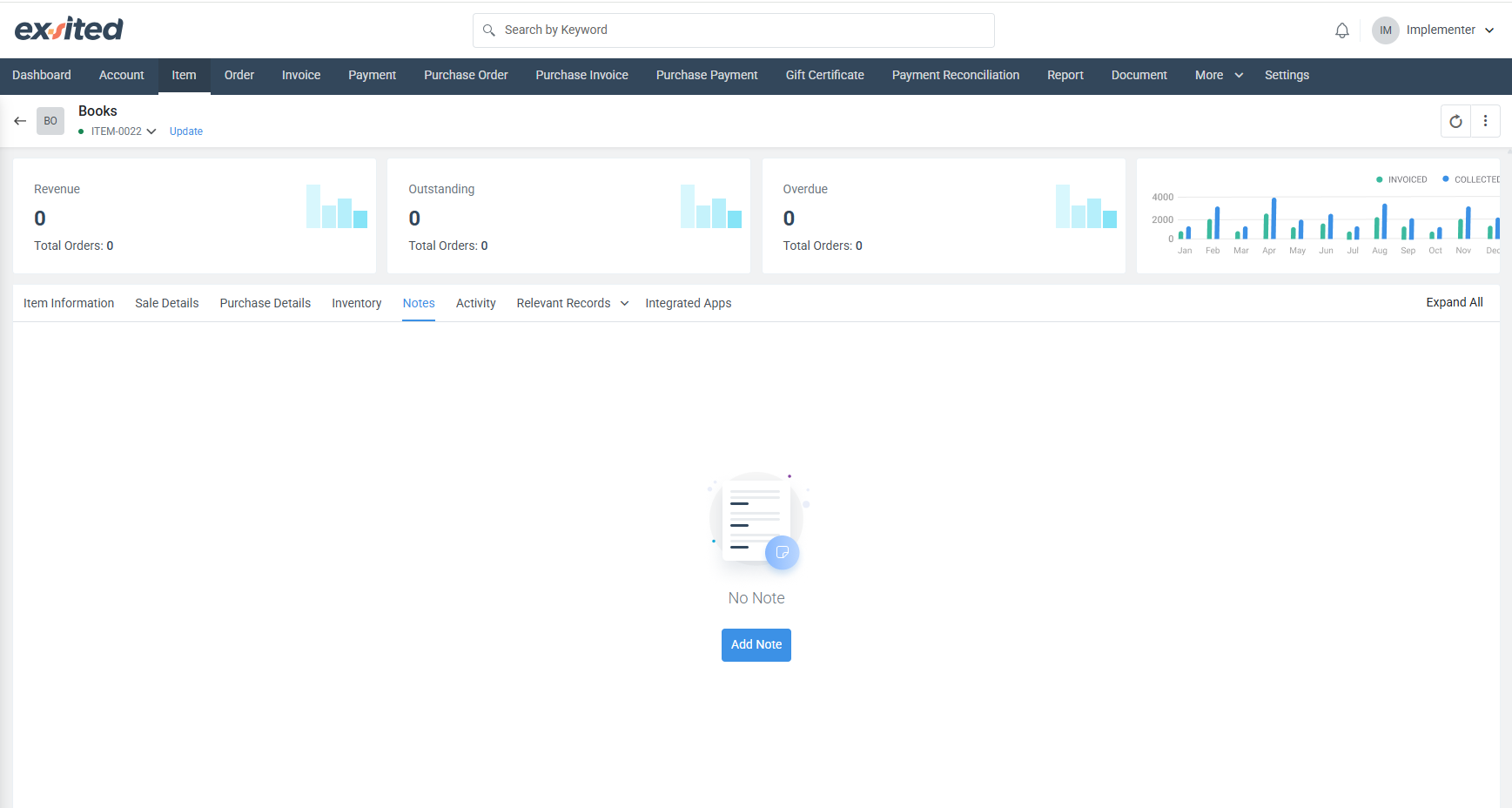
Relevant Records
The Relevant Records tab centralises access to all related documents and transactions associated with the item. This includes sales orders, invoices, quotes, fulfillments, purchase orders, purchase invoices, receipts, and return authorisations. Users can quickly reference the item’s complete transaction history through dropdown filters, facilitating audits, operational reviews, and informed decision-making. This tab ensures transparency and traceability throughout the item’s lifecycle.
Integrated Apps
The Integrated Apps tab displays the external systems and platforms with which the item can be synchronised, such as accounting software, e-commerce platforms, or job management tools. Each integration (e.g., Xero, MYOB, BigCommerce, AroFlo) shows whether the item is currently linked, and provides options to link, open, or export data. This centralised view supports seamless multi-platform data consistency and simplifies integration management for administrators.
.png)
Item Actions
After an item is created in the Items module, users can manage it further using the three-dot (ellipsis) menu available on the right side of each row. These actions help users maintain, organise, or restrict access to items as needed.

| Action | Description |
|---|---|
| Deactivate Item | Temporarily disables the item so it can't be selected in future transactions. |
| Delete Item | Permanently removes the item from the system |
| Edit Item Information | Opens the item form to update fields like name, description, stock values, or type |
| Lock Item | Prevents the item from being edited or modified |
| Pin Item | Keeps the item at the top of the list for quick access |
Notes
- System Generated ID ensures item uniqueness.
- All created items are timestamped for tracking.
- Users must ensure that at least Item Name and Item Type are selected to proceed with saving.
- You can draft the item to save progress or create it to finalise.